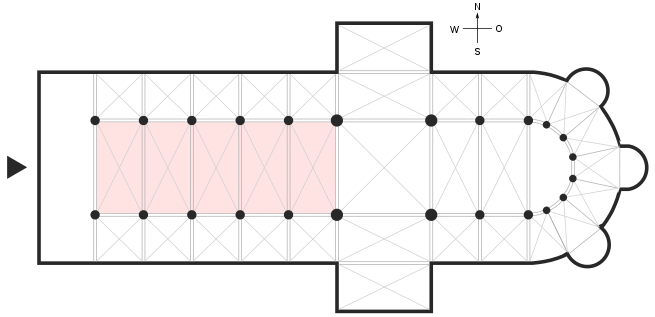
Main Difference
The main difference between Nave and Chancel is that the Nave is a main body of a church and Chancel is a space around the altar of a traditional Christian church
-
Nave
The nave is the central part of a church, stretching from the (normally western) main entrance or rear wall, to the transepts, or in a church without transepts, to the chancel. When a church contains side aisles, as in a basilica-type building, the strict definition of the term “nave” is restricted to the central aisle. In a broader, more colloquial sense, the nave includes all areas available for the lay worshippers, including the side-aisles and transepts. Either way, the nave is distinct from the area reserved for the choir and clergy.
-
Chancel
In church architecture, the chancel is the space around the altar, including the choir and the sanctuary (sometimes called the presbytery), at the liturgical east end of a traditional Christian church building. It may terminate in an apse.
-
Nave (noun)
The middle or body of a church, extending from the transepts to the principal entrances.
-
Nave (noun)
A hub of a wheel.
-
Nave (noun)
The navel.
-
Chancel (noun)
The space around the altar in a church, often enclosed, for use by the clergy and the choir. In medieval cathedrals the chancel was usually enclosed or blocked off from the nave by an altar screen.
-
Nave (noun)
the central part of a church building, intended to accommodate most of the congregation. In traditional Western churches it is rectangular, separated from the chancel by a step or rail, and from adjacent aisles by pillars.
-
Nave (noun)
the hub of a wheel.
